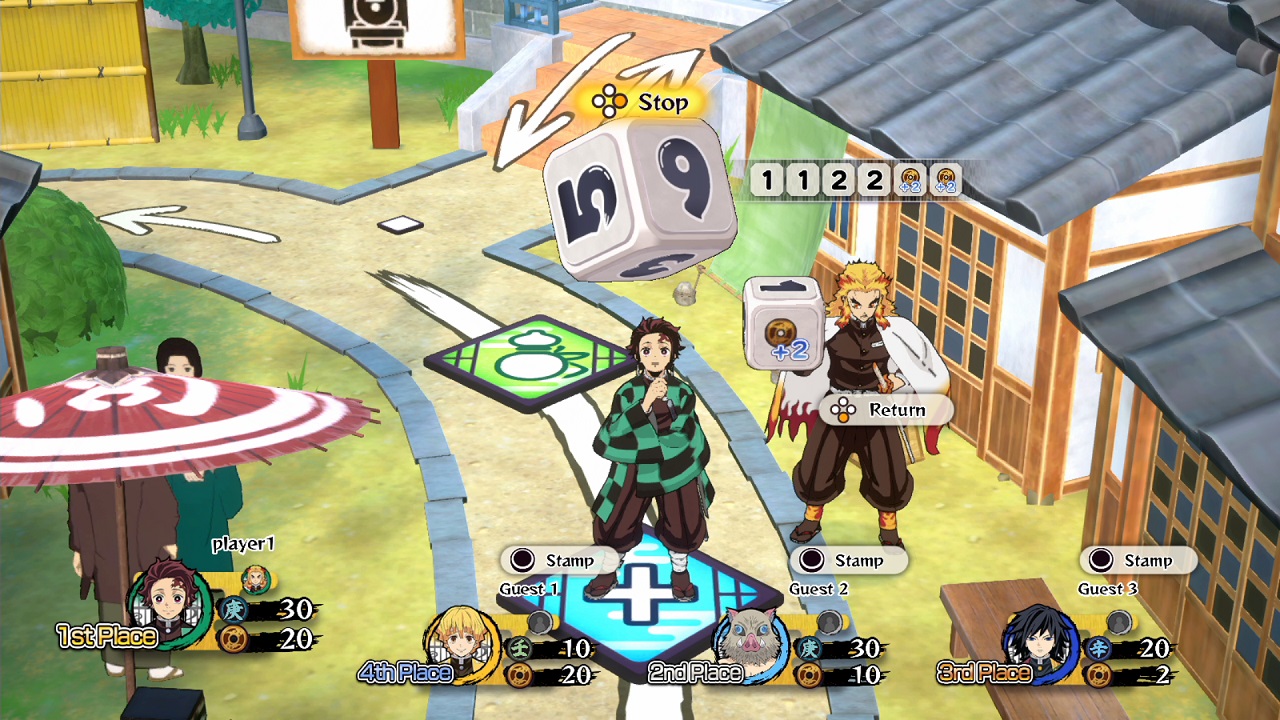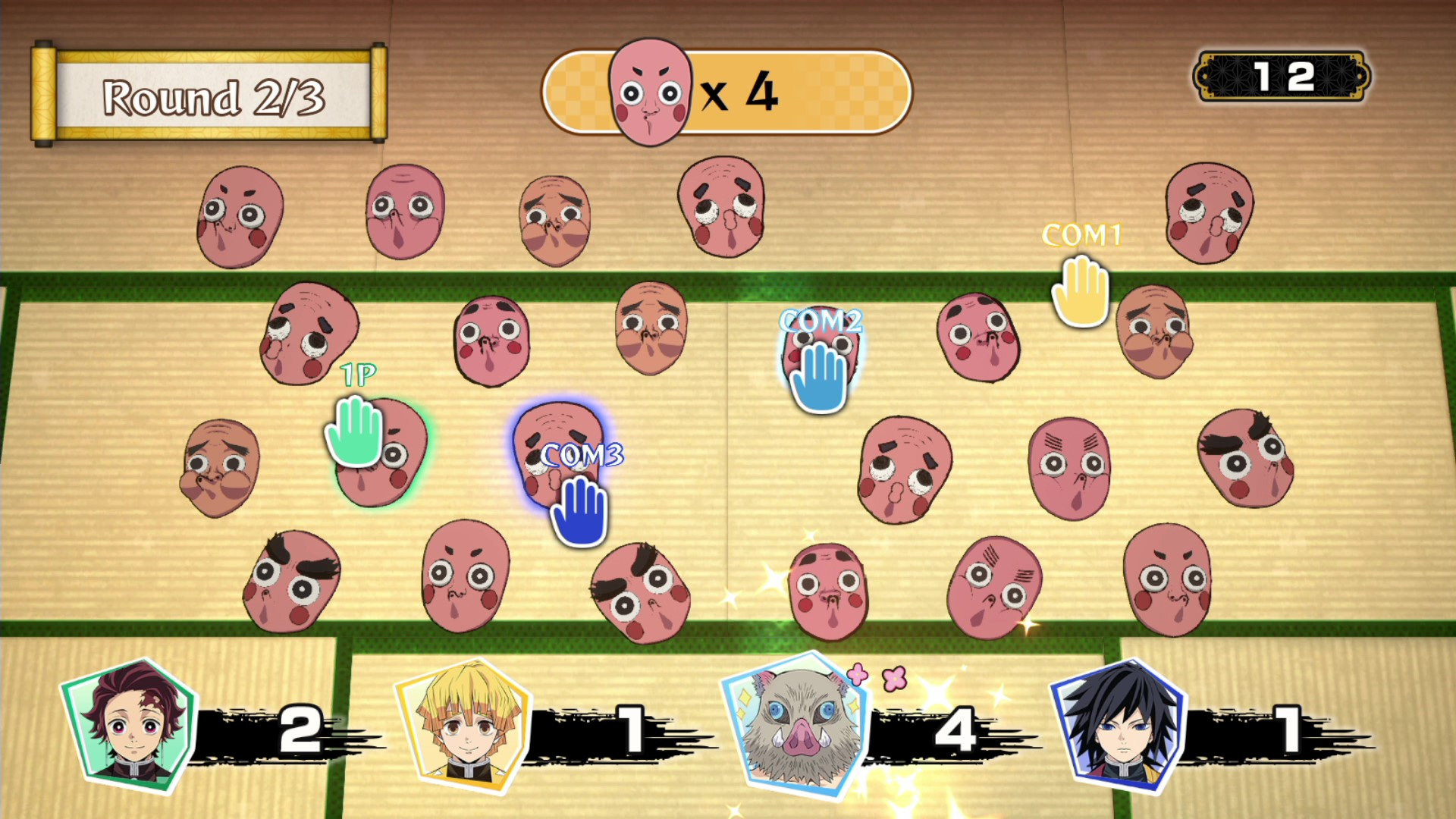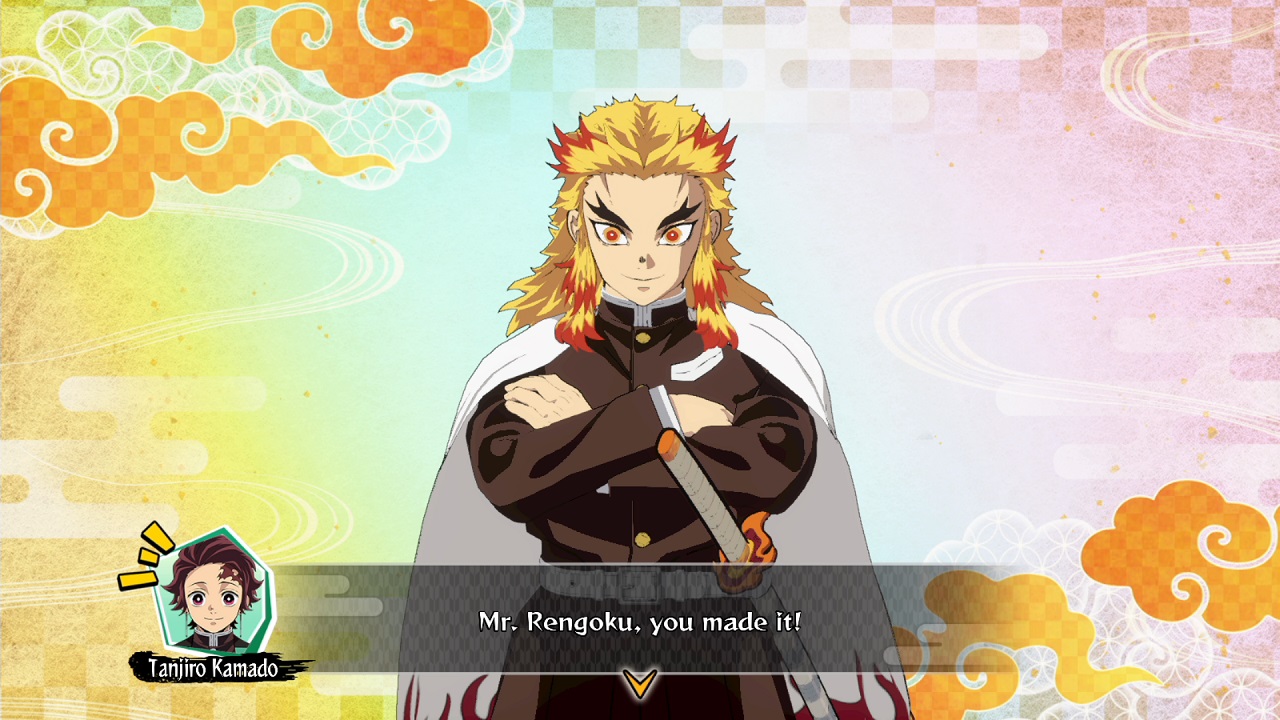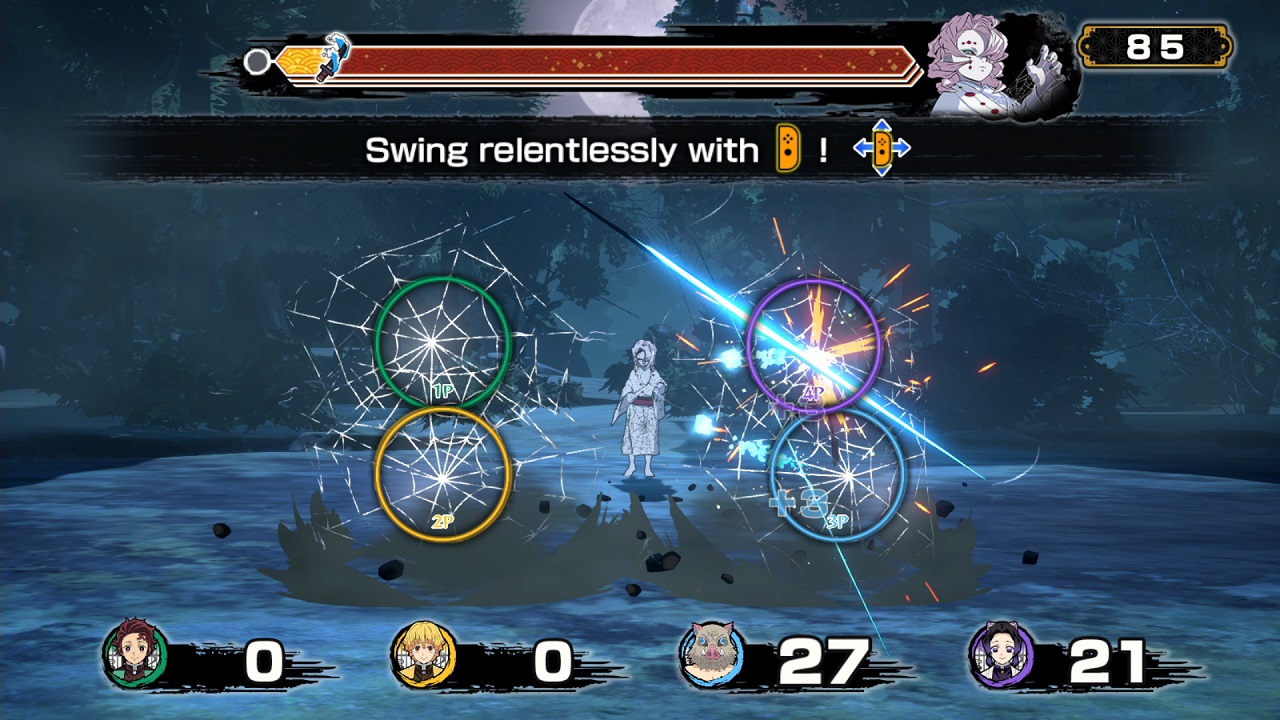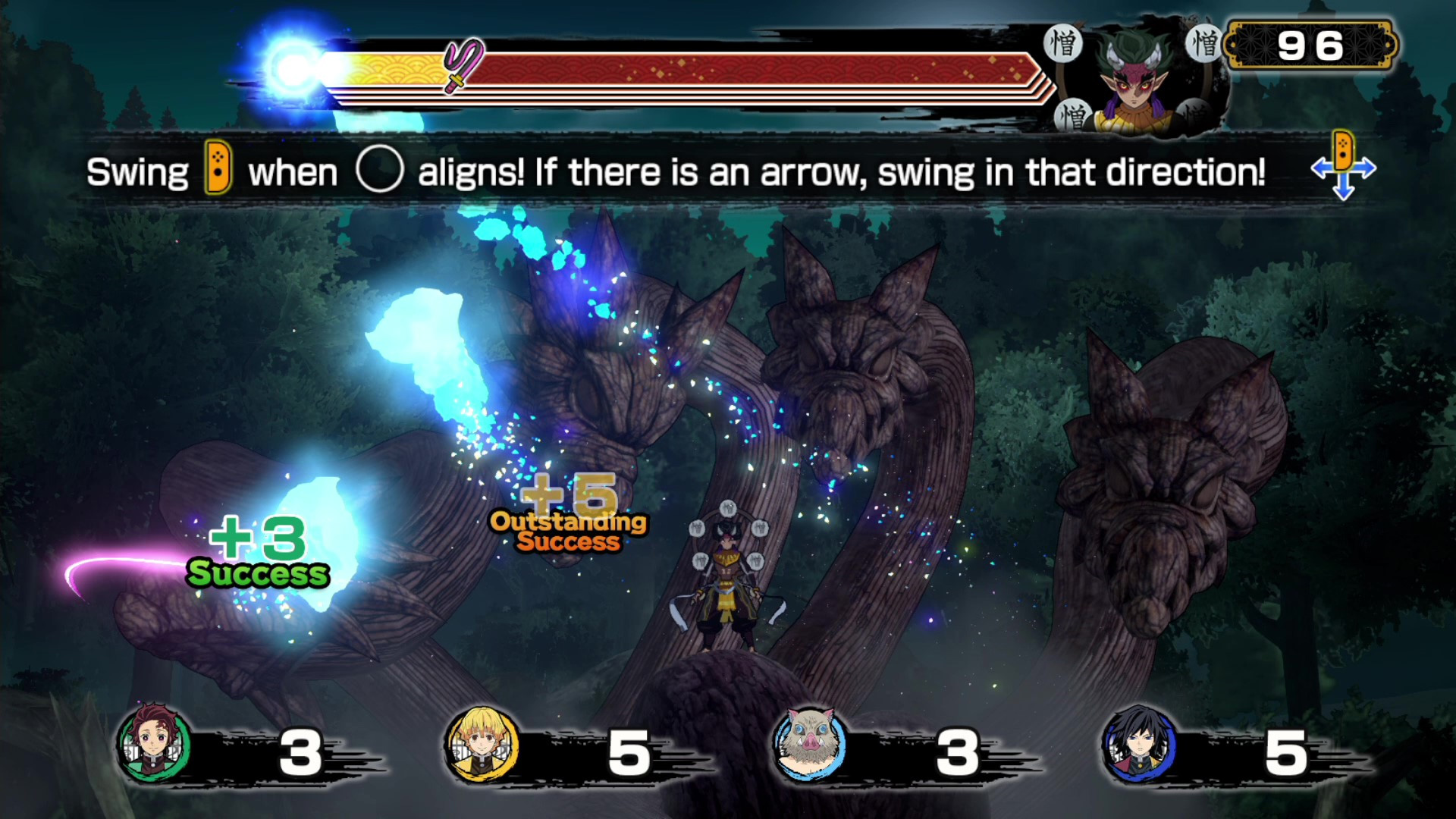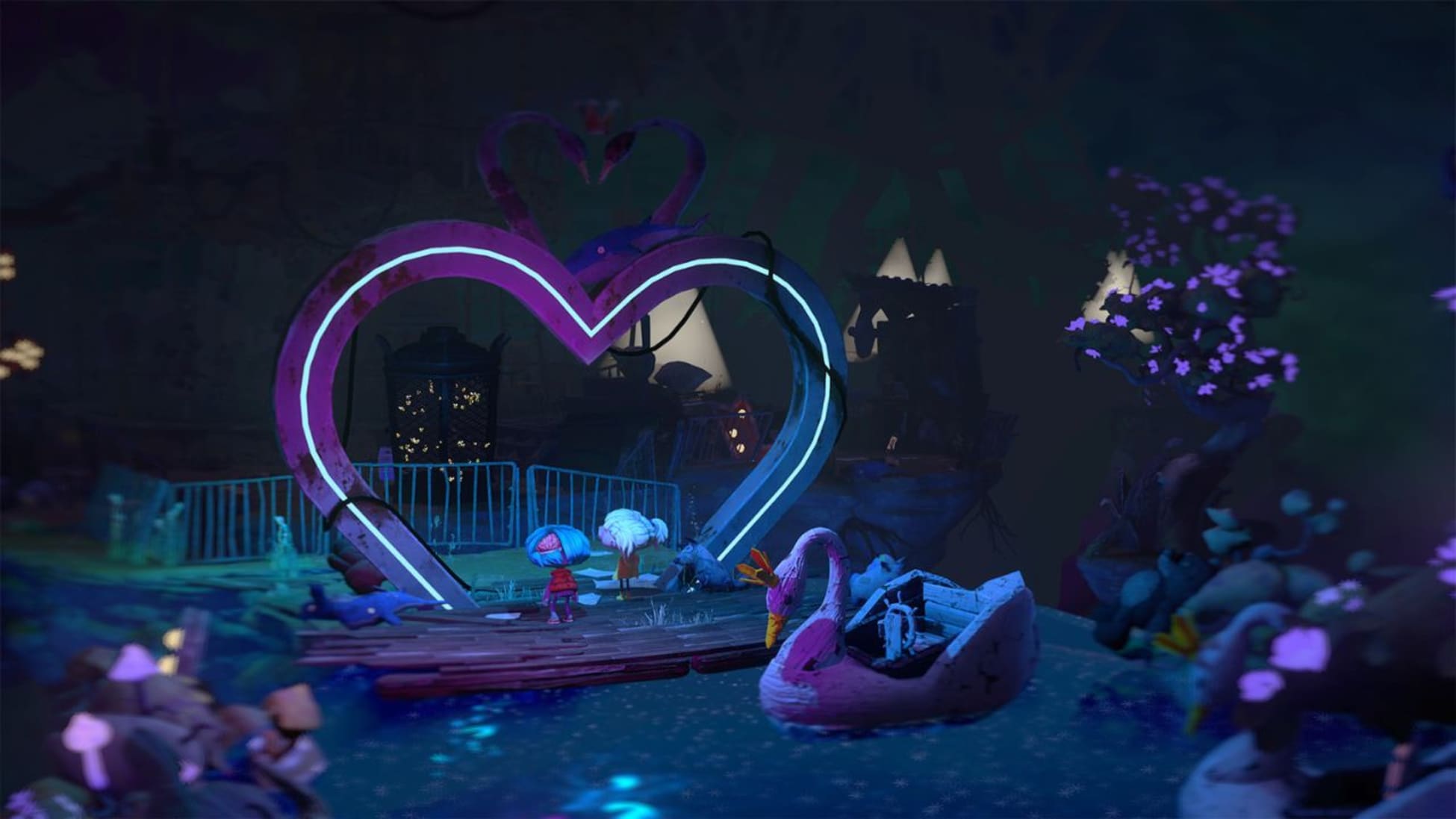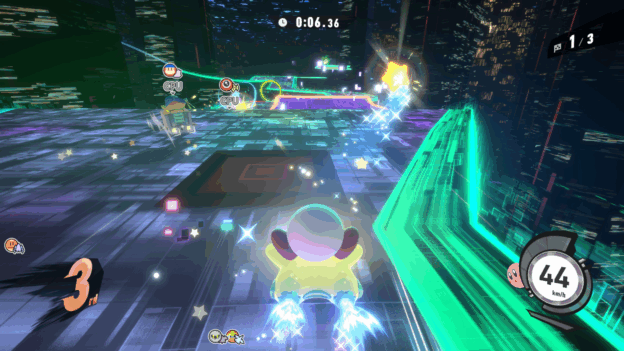Review: Demon Slayer -Kimetsu no Yaiba- Sweep the Board! (Nintendo Switch)

The fact that there’s a family board game based on the Demon Slayer anime warms my heart. Here, we’ve got this ultra-violent anime involving consistent beheadings, dismemberment, and general gore, and—with Demon Slayer -Kimetsu no Yaiba- Sweep the Board!—SEGA has turned it into a pleasant evening of light-hearted fun and family-friendly competition.
And it works, because the Demon Slayer manga and anime juxtapose that violence with optimism, humor, and moral fortitude in a way that only anime writers are able to pull off, for some reason. Kimetsu no Yaiba is fun to watch, and Sweep the Board! is fun to play.
Of course, you simply can’t play Demon Slayer -Kimetsu no Yaiba- Sweep the Board! without comparing it to the Mario Party games. You know how you can get a Monopoly game featuring Godzilla or…well…Mario Bros. instead of New Jersey real estate properties? That’s what SEGA has done with Sweep the Board! Kind of. They were smart enough to change up a few principal aspects of the Mario Party formula, and it’ll be those changes that either win over or turn away Mario Party enthusiasts.
The core is the same, mind you. There’s less pomp and circumstance at the start, but it generally boils down to selecting your characters, determining the rules and length of play, choosing a board, and rolling for initiative. Tanjiro, Zenitsu, and Inosuke are all playable characters, as well as various Hashira. Curiously, Nezuko (Tanjiro’s half-demon sister) is not playable. In a clever touch, she appears later in the game to help out the player in last place. Arigatō, Nezuko-chan!
Players take turns moving around the board in an effort to improve their demon-slayer ranking in various ways. Your rank is key, not collecting stars. That’s a nice break from the Mario Party formula, as it helps to keep things closer between players and eliminates the frustration of having a star yanked away from you at the last moment.
One of the main ways to improve your rank is to win mini-games, as you’d expect. These are a mixed bag as far as entertainment value goes, but that’s the same with all party board games I’ve played.
What I didn’t like is the relatively low number of games: 35. They start to repeat quickly, so you end up trudging through the less entertaining ones more often than you’d prefer. Also, you’ll recognize many from the various Mario Party entries. Jumprope? You know it. That said, they’re all pretty quick, and they’re served up with the boisterous fun that fans of the anime would expect from Tanjiro and his friends.
The emphasis is actually placed on strategic use of the boards themselves. They’re all based on locations from the manga/anime, and each provides numerous options for which path your character can take (and fun references for series fans). You’ll want to use the board to improve your ranking, not just collect coins in order to buy stars. And, you get more help. At shops, you can purchase more than one item at a time. You can also recruit characters with different dice skills and abilities, although who you get is often up to luck.
The biggest change from Mario Party is that the goal is to hunt and eliminate upper rank demons. During the game’s night cycle, you have the chance to flush out a demon if you move across the space where it’s expected to be hiding. Land a spinner at the right spot, and you trigger a co-op battle for all players. Miss, and you and the demon move onward, leaving a greater chance for the next player to find it.
Initially, the demon battles are really cool. They involve timing events: slash in the right direction, press a button the circles intersect, etc. It doesn’t sound like fun, but they’re accompanied by animations that add the right amount of drama and urgency. It doesn’t take long, however, for these battles to become repetitious and, I think, unlosable. They seem to be solely about determining who’s better at demon slaying, lessening the overall impact of these fights.
And if you play a short enough game (five rounds being the lowest), it’s possible you can get through the whole thing without a single demon fight.
Finally, there are multiple ways to play: 1-4 players locally, 1-4 players online (unfortunately, with some connection issues I hope they get ironed out), and 2-4 players via local wireless. If you’re passing around the Joy-Cons, motion controls are used cleverly, especially during the demon battles.
It all begs the question, then, of whom this game is for. It would be easy to say it’s just aimed at Demon Slayer fans, but I don’t feel that’s the case. My wife has never seen a single episode of that show, and she said after our first session that she liked Sweep the Board! more than Mario Party.
Heresy, you say? Well, understand that we’ve played pretty much every Mario Party entry since the GameCube, and there have certainly been some duds. Sweep the Board! changes up just enough in its style and pacing to feel more fresh than what Nintendo has given us.
The different graphics help, too. Although the five included game boards are familiar in their layout, they’ve got a unique vibe that’s fun to explore, especially for fans of the show. The daytime settings are bright and colorful, while the nighttime demons are just as creepy and unsettling as they are in the anime.
Considering that most anime-based games tend to just be action brawlers, I like that SEGA did something different with Demon Slayer -Kimetsu no Yaiba- Sweep the Board! I also like that they changed up the party board game formula enough to help it stand out. Best of all, though, is that the changes seem inspired by the Demon Slayer characters, settings, and themes as opposed to change for change’s sake. Although not perfect, the whole package comes together quite well, and will sit comfortably alongside Mario Party Superstars as an option on Hiner Family Game Night.

